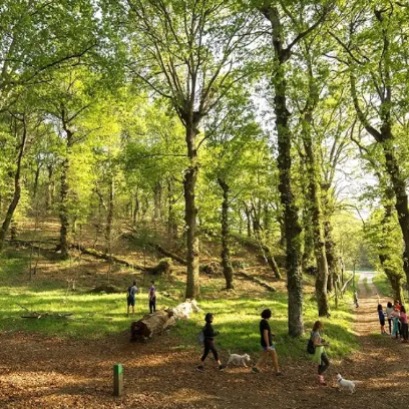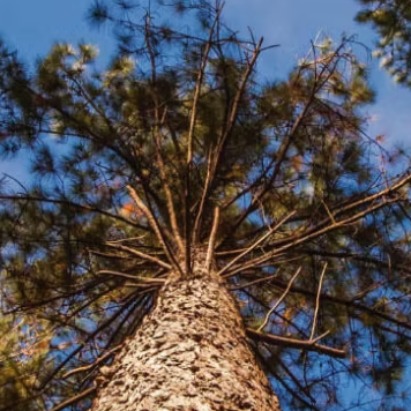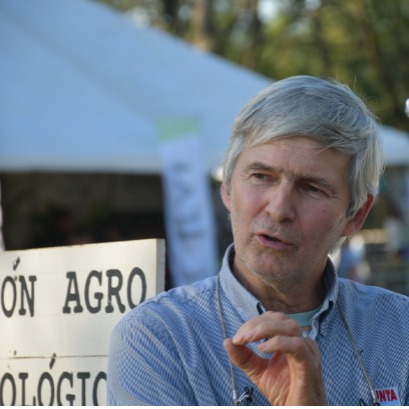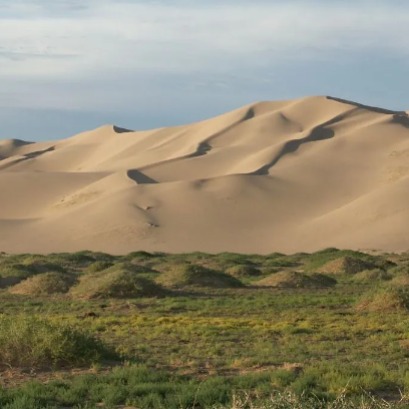
This is the Galician forest where the highest chestnuts in Europe grow
The place has centenary chestnut trees that reach 30 meters high and keeps in its shadows the memory of Emilia Pardo Bazán
A few kilometers from the center of Lalín extends La Fraga de Catasós, also known as Carballeira de Quiroga. With an area of ??just 4.2 hectares, this mixed forest of oaks and chestnut trees represents one of the best examples of the Atlantic deciduous forest that once covered much of Galicia. But its value does not only reside in its natural beauty: La Fraga hosts the highest chestnuts in Europe, with specimens that reach 30 meters high and exceed five meters of perimeter. These trees, planted at the beginning of the 19th century, were cultivated with care to provide slender and resistant wood, ideal for the construction of pazos and large house beams. The chestnuts could only be branches, without deconating them, thus allowing vertical growth. The forest, declared a natural monument in 2000 and a natural space of local interest in 2017, has been protected by its ecological uniqueness and by the wealth of its biodiversity. Inside, the visitor can observe mosses, fungi, lichens and a rich fauna that includes insects, salamanders, frogs and even the scarce flying deer, an endangered beetle. It is said that in this inspiring enclave, surrounded by the high chestnuts and the calm of the forest, he wrote some chapters of his most emblematic novel, Los Pazos de Ulloa. Hence, the place is linked to the history of Galician literature. Today, La Fraga de Catasós is open to the public and has a 1.2 -kilometer path, perfect for a family walk. The route, well marked and full of informative panels, allows us to immerse yourself in the history and ecology of this unique forest. In addition, a small fenced plot serves as a didactic space to observe the evolution of species such as chestnuts, oaks and cherry trees.
IT MAY INTEREST YOU
 Forestal Las Marías modernizes their sawmill to double its productive capacity
Forestal Las Marías modernizes their sawmill to double its productive capacity
The company starts an ambitious technological investment with state -of -the -art machinery of Brazilian origin. In a first stage, its production of tables will increase by 40%, with the goal of reaching 25,000 m³ per month and thus respond to the growing demand of the international market.
 José Olinuck says goodbye to INTA after 47 years: a life dedicated to agrometeorology and the service of agricultural production
José Olinuck says goodbye to INTA after 47 years: a life dedicated to agrometeorology and the service of agricultural production
With an exemplary career of almost half a century, the agrometeorologist coach José Olinuck retires from INTA Cerro Azul leaving for the productive sector of the NEA an invaluable statistical work on temperatures, rains and other weather conditions, in addition to the consolidation of a network of agrometeorological stations. His silent, meticulous and constant work allowed himself to anticipate the weather and improve the decisions of thousands of producers. When in 1978 José Olinuk entered the INTA Cerro Azul as a coach to take care of the area of ??Agrometeorology, he surely did not imagine that his work would mark over fire the development of this discipline in the region. Today, a few days after his retirement, he reviews with emotion a whole life dedicated to observing the climate, collecting data, issuing newsletters and, above all, being a reliable source of information for producers, researchers, teachers and students.
 A forest is consuming one of the worlds largest deserts
A forest is consuming one of the worlds largest deserts
The region of northern China has been affected by droughts and the advance of the desert, before this, an artificial forest glimpses as a solution





















